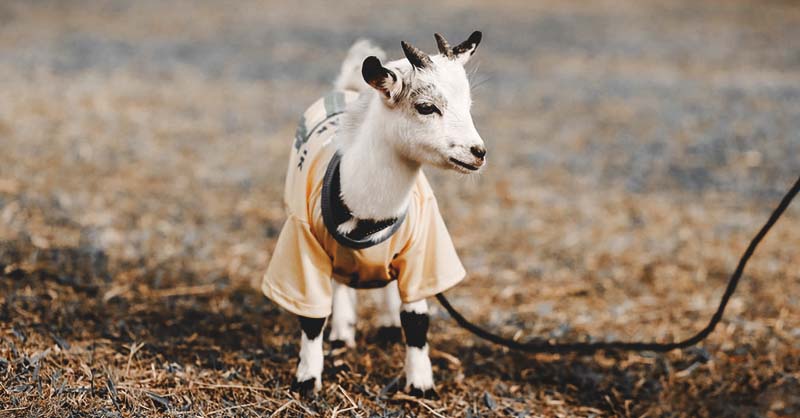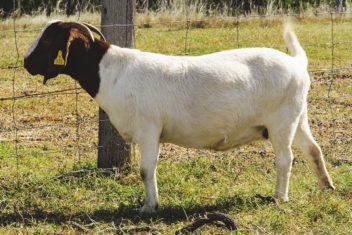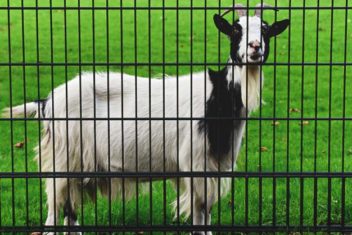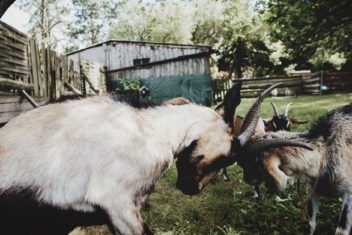Few things bring more satisfaction to a homesteader than seeing their sleek, contented herd of happy goats on a bright summer’s day.
Yet 12 years ago, most of our summer days right into winter were spent puzzling over our sick LaMancha does. We couldn’t understand why all of our does were gaunt and sickly after years without a problem.
After consulting a more experienced friend, we realized we had an epidemic of goat internal parasites.
Today we’ve learned to be proactive in treating the number one cause of illness in our caprine companions. Goats can have both external parasites, which would include pests like ticks and mites, and internal parasites.
While both kinds of parasites zap the health out of goats, internal parasites especially are their arch-nemesis. In this article, I’m going to cover what are goat internal parasites, tools available to identify them, and the three most common methods to prevent and treat them.
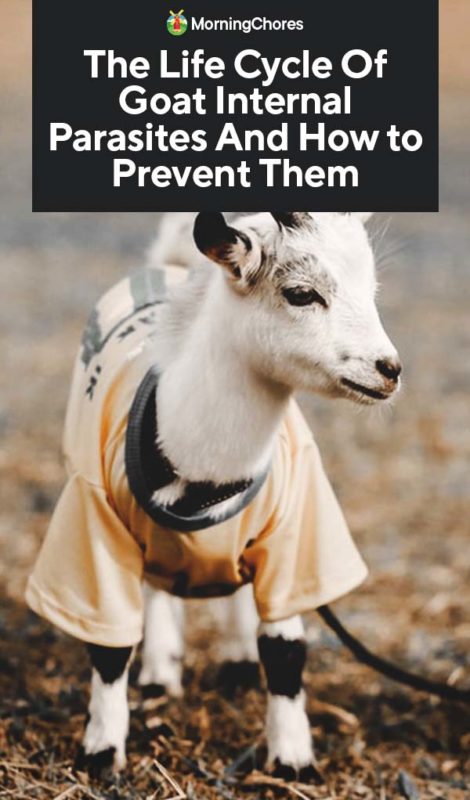
What Are Goat Internal Parasites?
Parasites are organisms that thrive off another living being (called the host) without providing any benefit to the host.
It’s true all goats have parasites. What causes concern is when the parasites outgun the immune system, called a parasite infestation.
Imagine a fort surrounded by enemy troops always scouting for an entry. Your goat’s immune system and health is the defense, and the enemy army is the parasites.
To protect the fort, there are two attack methods.
One, replenish your defending army. Send in fresh troops with balanced nutrients, keeping stress low, and a clean, natural environment.
Two, starve the invading army. Good management practices and de-worming preventatives slash the numbers of parasite invaders. While nothing entirely obliterates them, keeping their numbers low makes them manageable for the goat’s immune system.
The Life Cycle Of Internal Parasites
Multiple studies exist highlighting the science of a parasite’s life cycle. I’m not a vet, so to keep things simple for you (and me!), we’ll focus on the life stages of a parasite.
Stage one is the parasite in egg form. The eggs are laid by adults already existing in the host (again, there is no way to annihilate all parasites and prevent this cycle from happening) and then passed through the feces.
At stage two, the parasites, now called larvae, emerge from the eggs, finding a nursery on the ground.
Regardless of the type, the survival goal of the larvae is to reach stage three and ingested by a host either through grazing or dirty water, hay, or feed.
Stage three begins once the larvae find entry into a host and use this second nursery to molt into an adult. Once matured it, in turn, lays eggs in the host and the cycle begins again.
Kinds of Goat Internal Parasites

Goat internal parasites are often more severe than external parasites and require extra diligence to spot.
Here are five of the most common goat internal parasites:
1. Stomach and Intestinal Parasites
Invaders that lounge in the stomach and intestinal lining, these nasties include the deadly barber pole worm (Haemonchus contortus). Members of the nematodes class, these parasites leech blood from the stomach and intestines.
Nematodes are transmitted through grazing, especially areas where the grass is short, the pen is overcrowded or has not been given three months of rest from when the goats last grazed it.
Symptoms for nematodes include anemia (pale eyelids and gums are telltale signs), scouring, rough or “starry” coat, and loss of weight or appetite.
2. Protozoal Parasites
Coccidia is the most common caprine protozoal strain. It is most often seen in kids since adults often develop immunity later in life.
Adults, however, will continue shedding coccidia. This contaminates the ground and is passed on to kids, especially as warmer, spring temperatures make conditions favorable to its survival.
Another intestinal attacker, the top signs for coccidia are scouring and stunted growth, causing death if left untreated.
3. Tapeworms
Tapeworms are the most common worm for goats and are often ingested from overgrazed pastures. They typically don’t cause symptoms unless their numbers are exceptionally large, which then causes feces to be loose or have mucus.
4. Liver Flukes
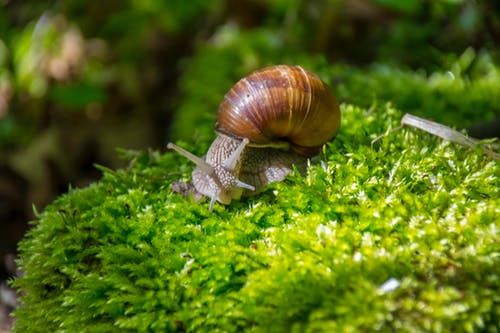
As the name suggests, this worm invades the liver wreaking havoc in it if untreated. These parasites are unique in their life cycle, beginning life in the water and needing a snail host to complete childhood.
Finally, they migrate to grass where an unsuspecting host ingests them. Symptoms include lethargy, poor appetite, and weight loss.
5. Lung Worms
Depending on its type, this pathogen lives in the bronchi or spinal cord. Coughing and difficulties with breathing are the most common signs of this parasite.
Identifying Goat Parasites
The signs and symptoms mentioned are all distress signals that parasites are attacking a goat’s immune system. There are two tests you can use to determine if your goats need to be dewormed.
These two tests are fecal examinations and FAMACHA.
1. Fecal Examinations
Fecal examinations are the most common method for detecting types of parasites. Many vets offer this service. However, you may consider learning how to perform fecal exams yourself for the following reasons:
- Your local vet is not familiar with goat health.
- You have a large herd where multiple fecal exams would be costly.
- You have encountered misdiagnoses and want to be confident in what parasites you are treating.
To perform fecal examinations for your herd, you’ll need a quality microscope with a built-in light, a parasite identification guide with quality photos, and accessories such as flotation fluid, scales, and of course, fecal samples from your herd.
2. FAMACHA
Another form of testing is FAMACHA testing. Most often used for barber pole worms, this is a skill worth learning.
The FAMACHA cards rate the color of the eyelids and are handy for knowing what shades of pink call for deworming. FAMACHA helps decrease the number of chemical dewormings and lessen the chance of parasite resistance.
The University of Rhode Island has a thorough video about FAMACHA.
Preventing Parasites
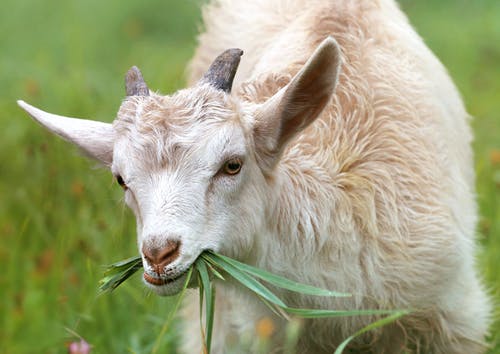
Do you feel overwhelmed by the many invaders we must guard our goat friends against? Take heart; there are trusted prevention methods. In the U.S. the most common are pasture rotation, natural dewormings, and chemical dewormings.
1. Pasture Rotation
When we nursed our dairy does back to health, we found pasture rotation to be our best, most lasting answer.
Pasture rotation mimics the natural browsing patterns of goats. Wild goats rarely experience parasite infestation because they are always on the move. When goats move around there is no build-up, the larvae have no host to complete their life cycle in, and goats are not forced to graze low to the ground.
With rotational grazing, goats are moved to fresh ground every week or even every day.
As you noticed when reading about the individual parasites, almost all of them are transmitted during grazing. Since pathogens have to climb up grass stems, the taller the forage, the less likely for the goat to ingest parasites.
The obvious disadvantage to rotational grazing is more time is spent moving the herd to new forage. Because this is a time commitment, rotational grazing works best for those who:
- Have the ability to herd their animals from one paddock to another.
- Have a lifestyle allowing them to commit to the time commitment of moving animals before their forage becomes too short.
- Have the space to create numerous paddocks to use on a rotational basis.
2. Natural Dewormings
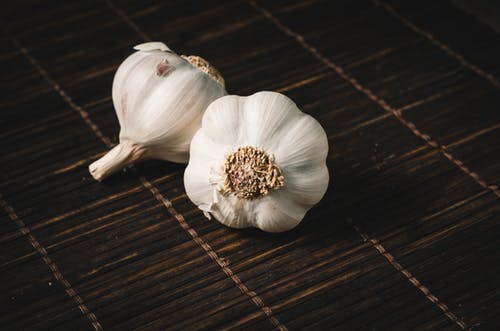
Like pasture rotation, natural or herbal dewormings appeal to goat owners wanting to stay away from chemicals or pharmaceuticals. The theory behind natural dewormers is to 1. build the immune system and 2. make the blood system so offensive to the parasites that they leave the host.
Natural dewormings are herbs or natural products like garlic or grapefruit seed extract. Wormwood is a common herb in herbal wormers, though it should not be used in pregnant animals.
Herbal and natural wormers are done on a continuing basis ranging from weekly to monthly depending on the herbs. Herbs and plant-based remedies can also be used alone or as a mix.
Because they require a consistent schedule, natural dewormers work best for those who:
- Raise goats as a source of natural meat or dairy and do not want them treated with chemicals.
- Goat owners with a lifestyle allowing them to commit to the daily or weekly diligence of natural dewormers.
3. Chemical Dewormers
Numerous chemical dewormers exist on the market ranging from general dewormers to parasite-specific varieties. The plus with chemical dewormers is their convenience and swift action on parasites. Their disadvantages lie in the parasites ability to develop resistance to them, becoming “super” bugs.
Chemical dewormers work best for those who:
- Raise goats on large amounts of land where parasite build-up is minimal and dewormers are only needed on a maintenance basis.
- Use it in combination with pasture rotation and natural dewormers as a precaution during high-stress periods such as postpartum and especially wet springs.
After experiencing the heartbreak of sick animals, an ounce of parasite prevention is most certainly worth a pound of cure. Understanding the life cycle of parasites, their symptoms, and how best to prevent them makes your goats’ life and your own a whole lot easier.

